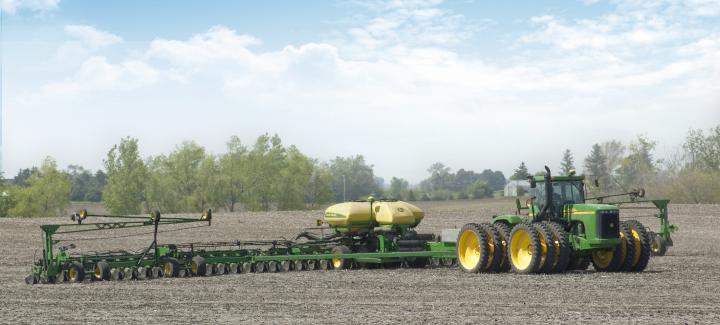
In a year when there’s lingering uncertainty about which crop inputs may be available by the planting and growing seasons, there are ways growers can plan ahead. One option for growers is seed treatments. While there are many seed treatments on the market, a lot of thought and consideration needs to take place before you decide which product will best suit your seed. Our experts provide a few considerations on understanding and evaluating seed treatments.
Back to the basics
One key tip to remember regarding seed treatments is that they do not enhance the yield capability of the seed you purchase; instead, they protect the genetic potential of the seed. To achieve top-end yields, you need to rely on the latest, highest-yielding genetics on the market before you consider your seed treatment options. Once you’re ready to start the conversation about seed treatment options, answer these questions.
- What are the agronomic challenges that could come about this year? What were the challenges last year, and could they be present again this year? Could a seed treatment help?
- What ingredients are in the seed treatments? How do these ingredients provide value to the seed?
- What are the strengths and weaknesses of the seed treatment? Will it help protect my seed from the issues I’ve seen in the past that could potentially impact my fields this spring?
- What are the rate and unit recommendations? What rates will make the product more effective for my seed?
It’s also important to understand the three components of seed treatments:
- Insecticides: Insecticides provide additional protection from below- and above-ground pests. They can protect your seed investment against below-ground pests such as wireworms, seedcorn maggots and white grubs. And, early on, they can protect against above-ground pests such as various worm species, bean leaf beetles, aphids and thrips. For insecticides, another consideration is the dosage level. Protection will only last if the dosage remains lethal in the plant, so as the plant’s biomass increases, the level of insecticide within the plant will likely decrease. This is where continual scouting for pests and post-emergent insecticide applications may be necessary.
- Fungicides: If soil-borne pathogens, such as Pythium spp., Phytophthora spp., Rhizoctonia solani and Fusarium spp., are present in your fields or if seed-borne Phomopsis and Sclerotinia are a concern, fungicide treatments should be a consideration. Fungicides help protect your seed investment from these unwanted pathogens.
- Additives: Just as their name implies, additives essentially add more value to the seed treatment products, whether it provides extra protection or an easier way to apply the product. Common additive products can include:
- Nematicides — Nematicides are added to seed treatments to help combat soybean cyst nematodes in soybeans and stinging nematodes in corn.
- Planting polymers — Adding planting polymers to a seed treatment can result in smoother, better-flowing seed, which enables more accurate planting.
- Inoculants and/or bio-stimulants — Inoculants and bio-stimulants are live bacteria applied directly to the seed to provide better protection against pests and/or achieve a faster-growing seed.
- Boosters — Growers can add other fungicides or insecticides (boosters) to their desired seed treatment to boost the performance of a given weakness of the treatment. For example, if the main fungicide is weak on Rhizoctonia, a booster product may be added to fill in this gap in protection.
Lesson summary
Remember, before you identify which seed treatment will best suit your seed, understand your field history, and then ask the right questions. Which pests and diseases could pose a threat to your fields this year? Of the seed treatments you’re considering, what value would they add to protect your seed? What ingredients are in the treatment and at what rates are recommended? Would an additive provide extra protection? Would an additive provide extra protection? It’s critical to choose the treatment that addresses your needs and will adequately protect the investment in the genetics you have purchased.
As always, your local Stine sales representative and regional sales agronomist will help you every step of the way to protect your high-yielding Stine genetics. Considering seed treatments for 2022? Give us a call, and be sure to ask about our line of Stine XP soybean seed treatments.
Related Articles
-

Use Stine’s XP® seed treatments to prevent early injury to your crops
December 2025 in Agronomy
-

Understanding Stine’s enhanced oil profile soybeans
December 2025 in Agronomy
-

Soil sampling sets the stage for spring
November 2025 in Agronomy
-

Corn production growth paves way for more high-performing Stine® hybrids
November 2025 in Agronomy



